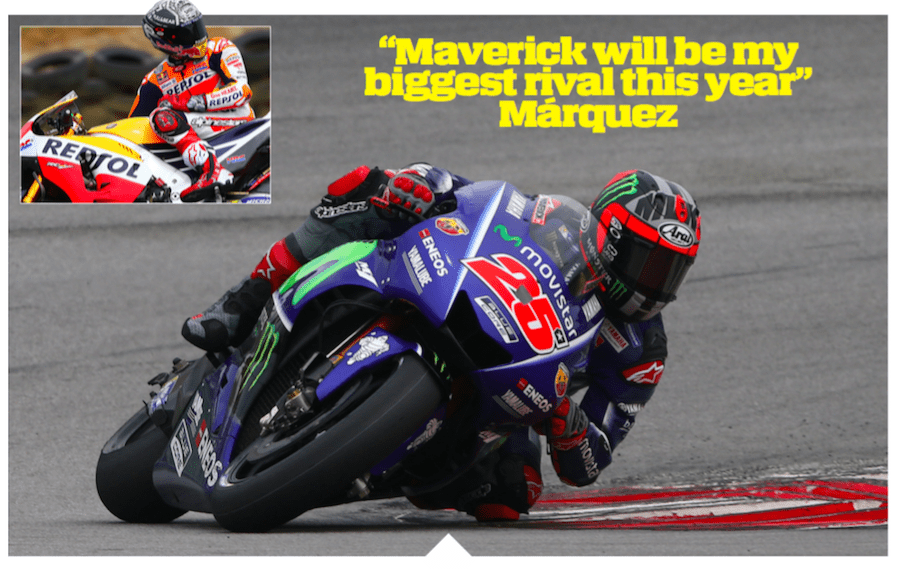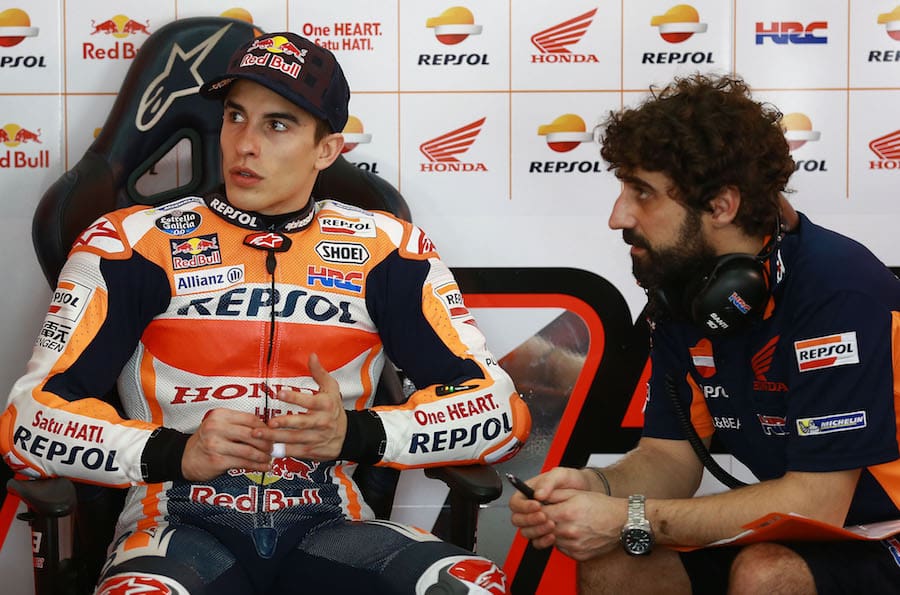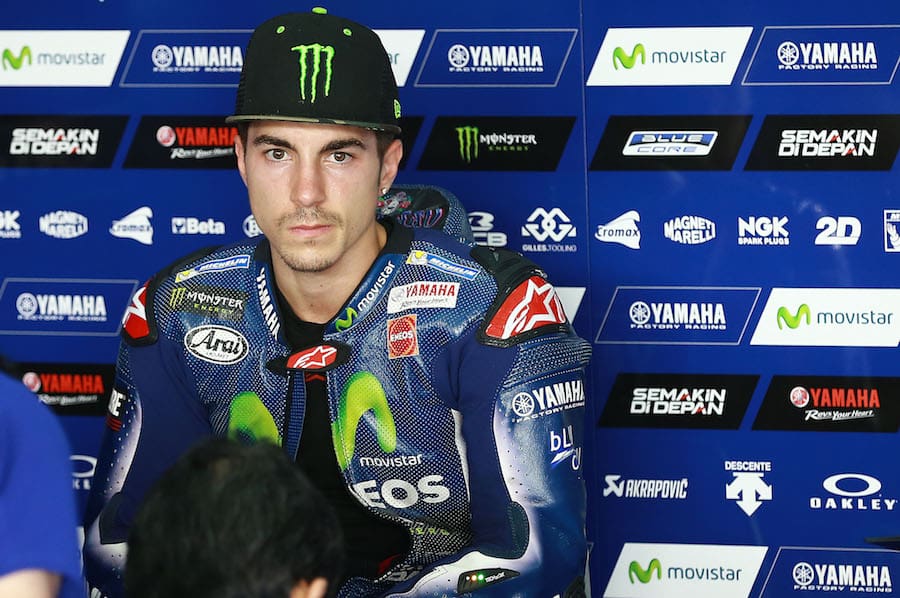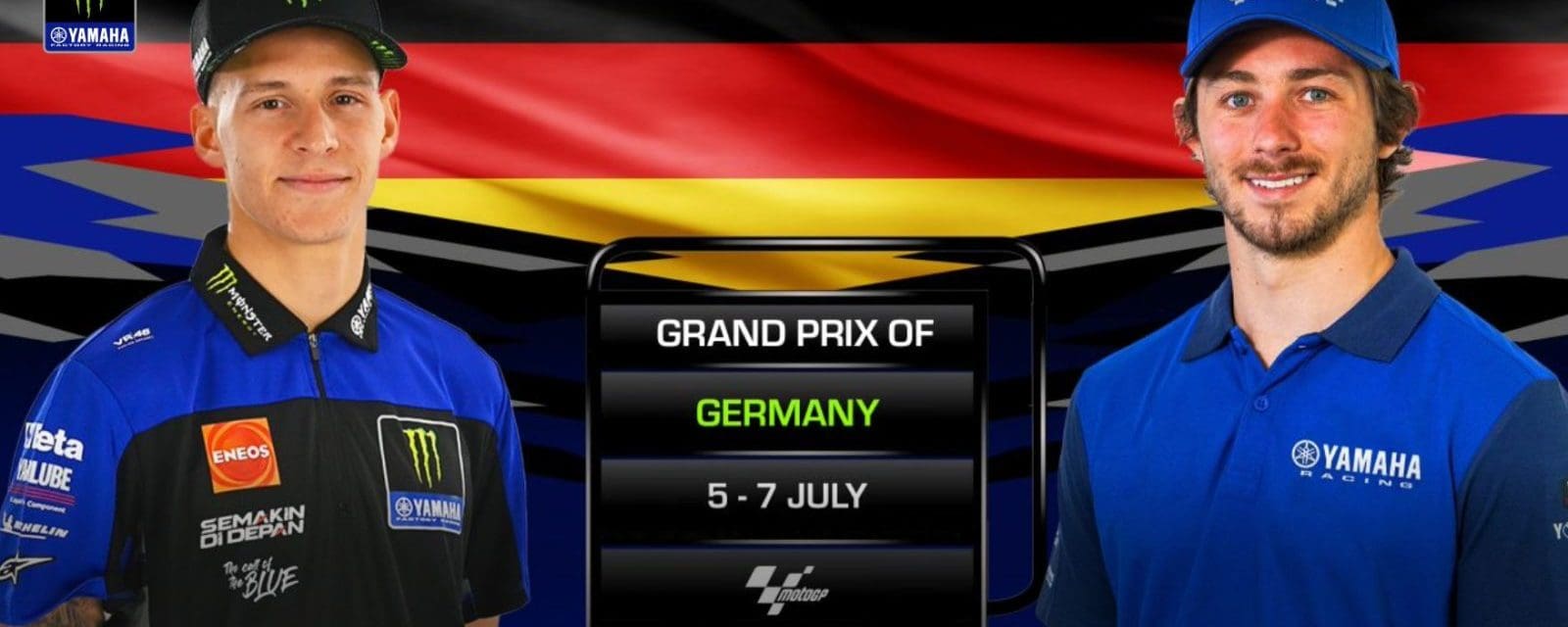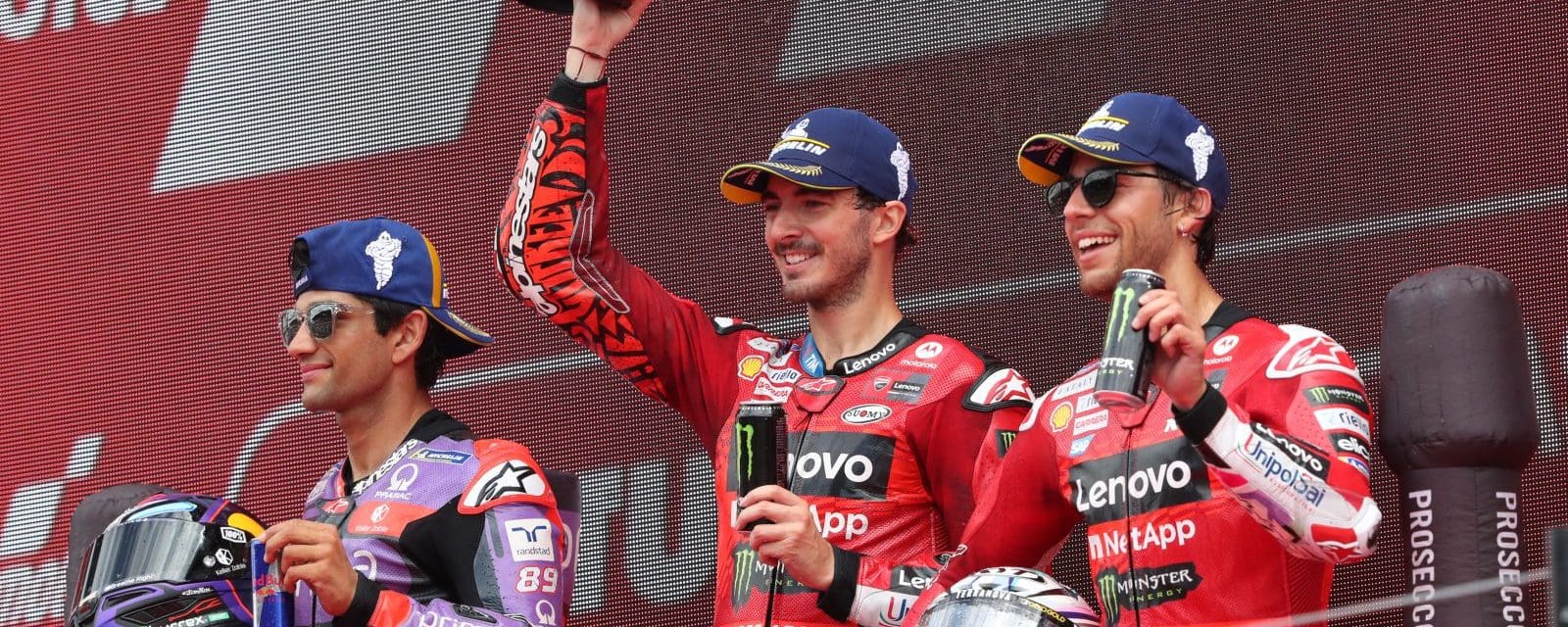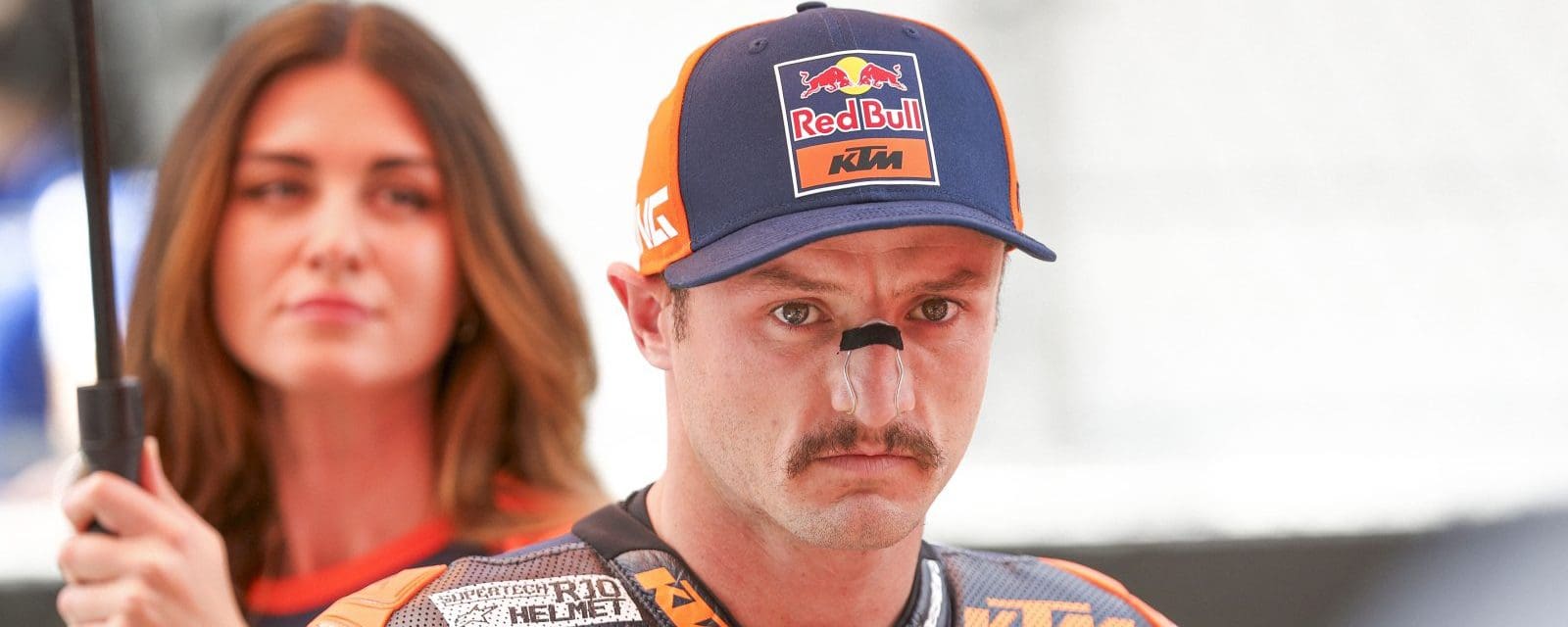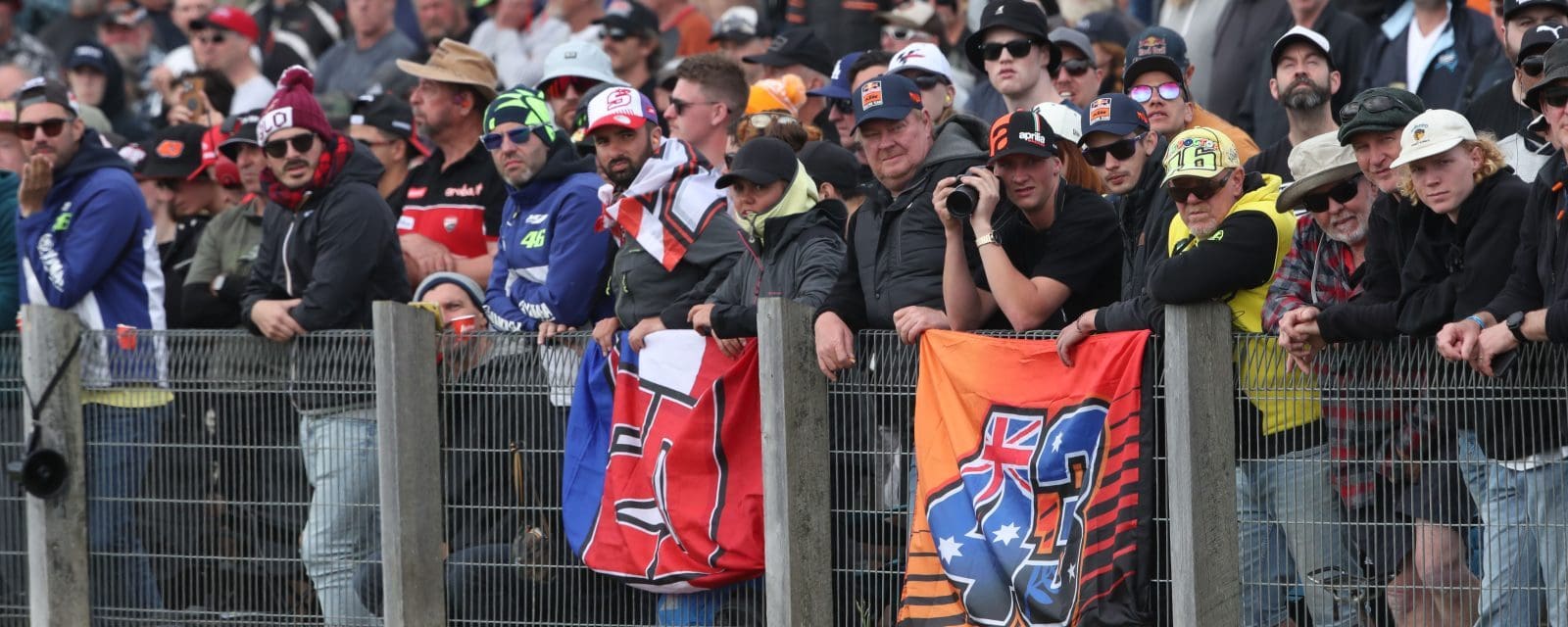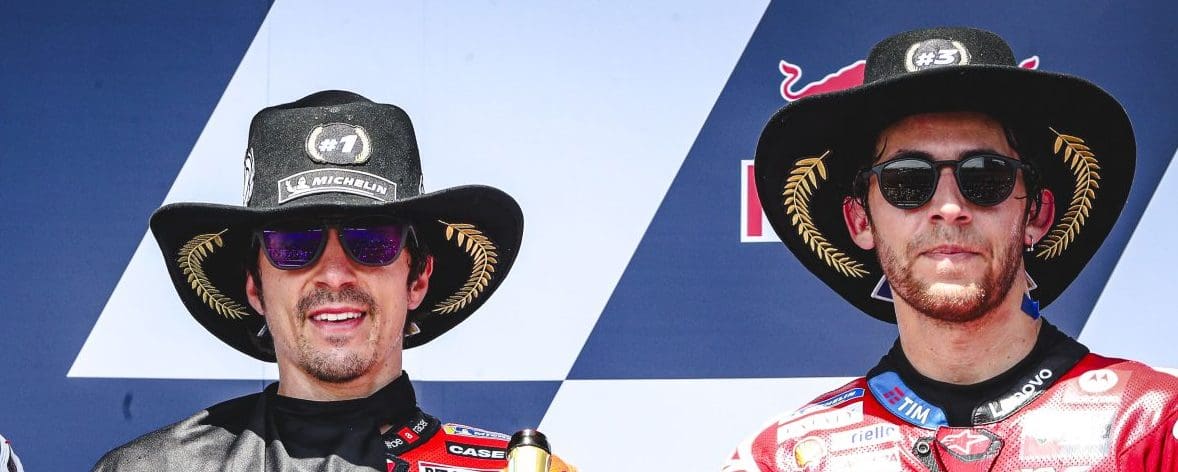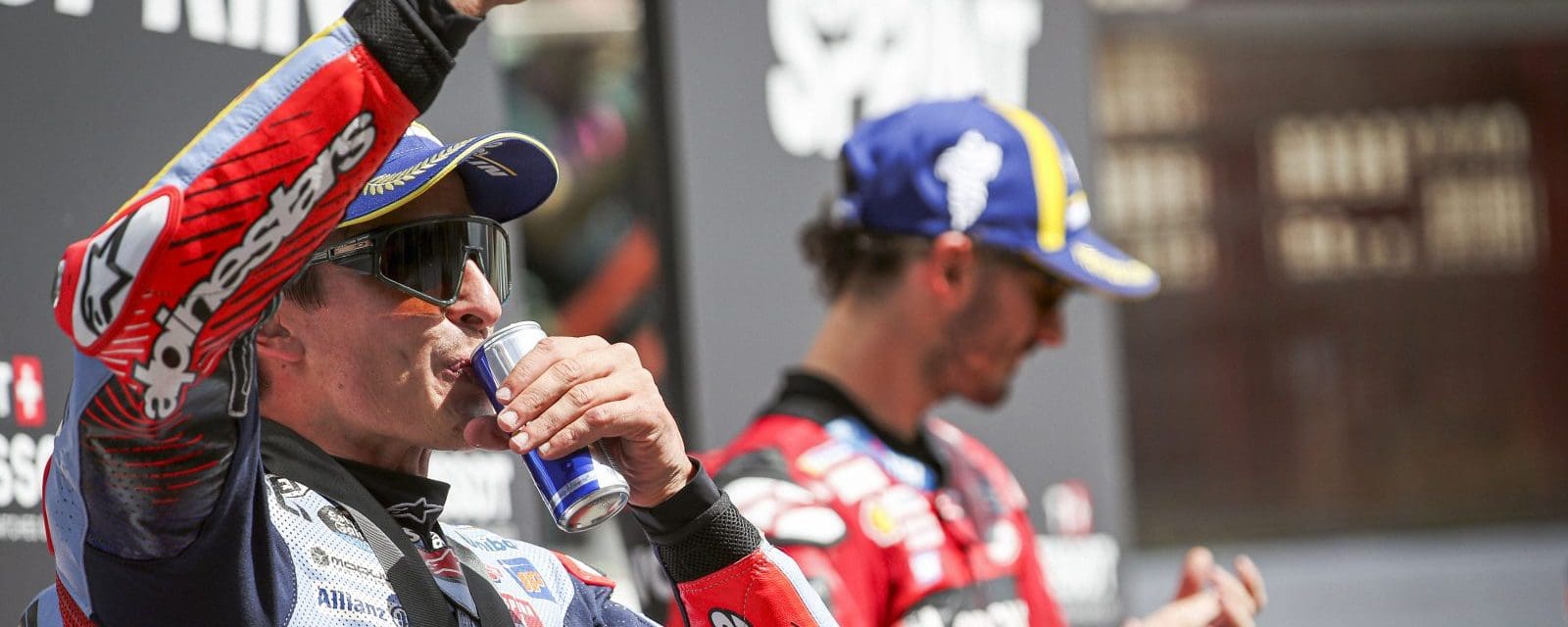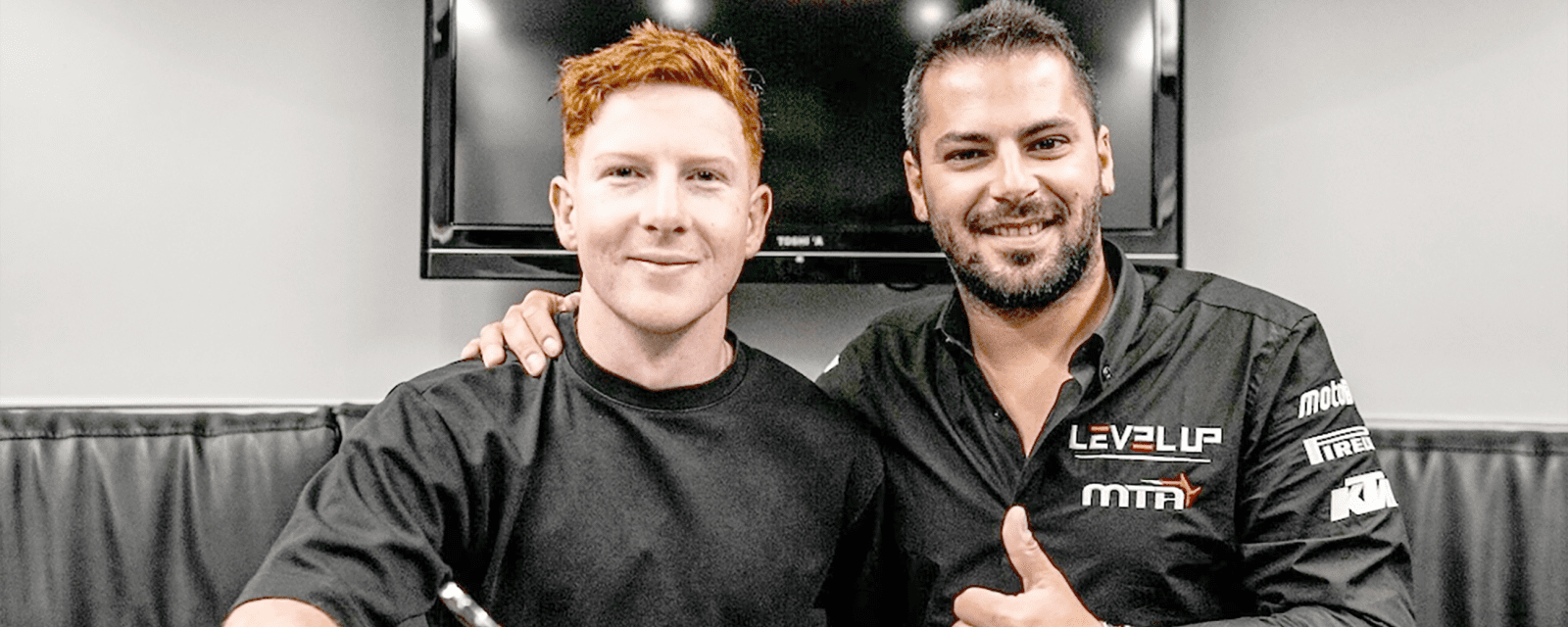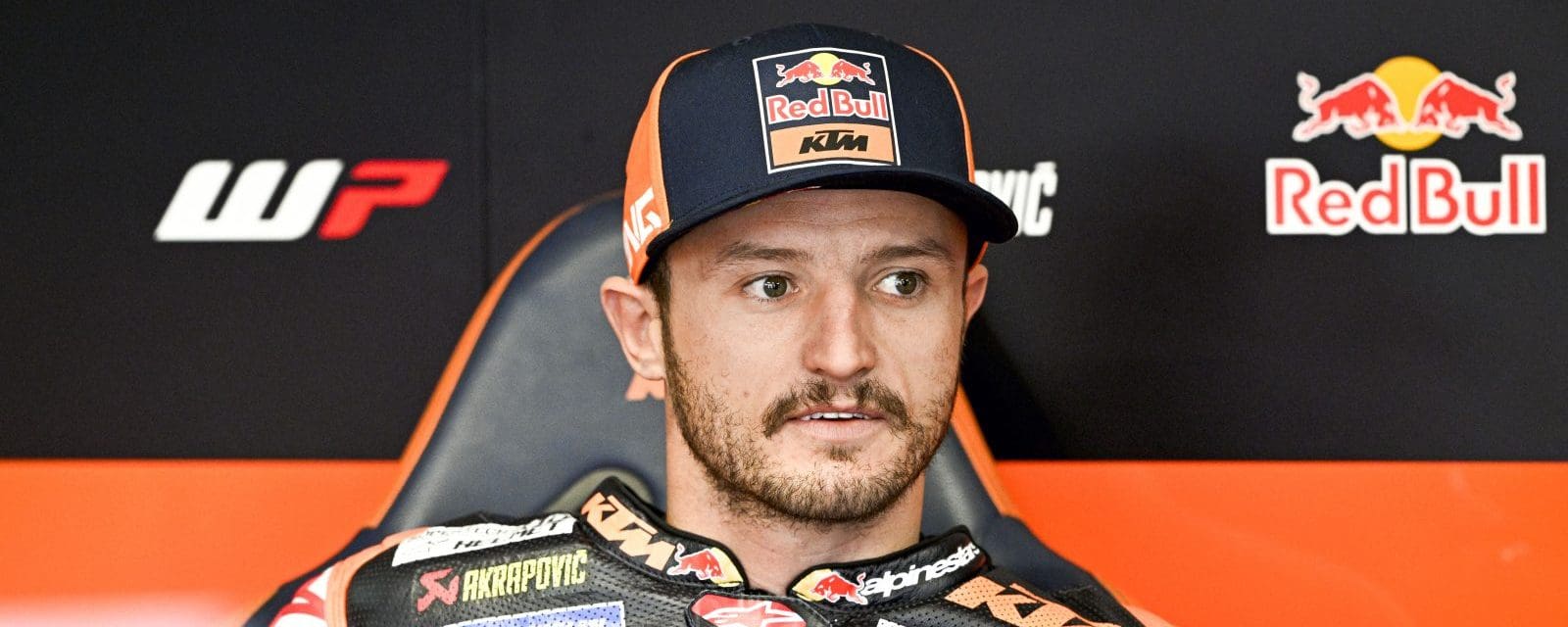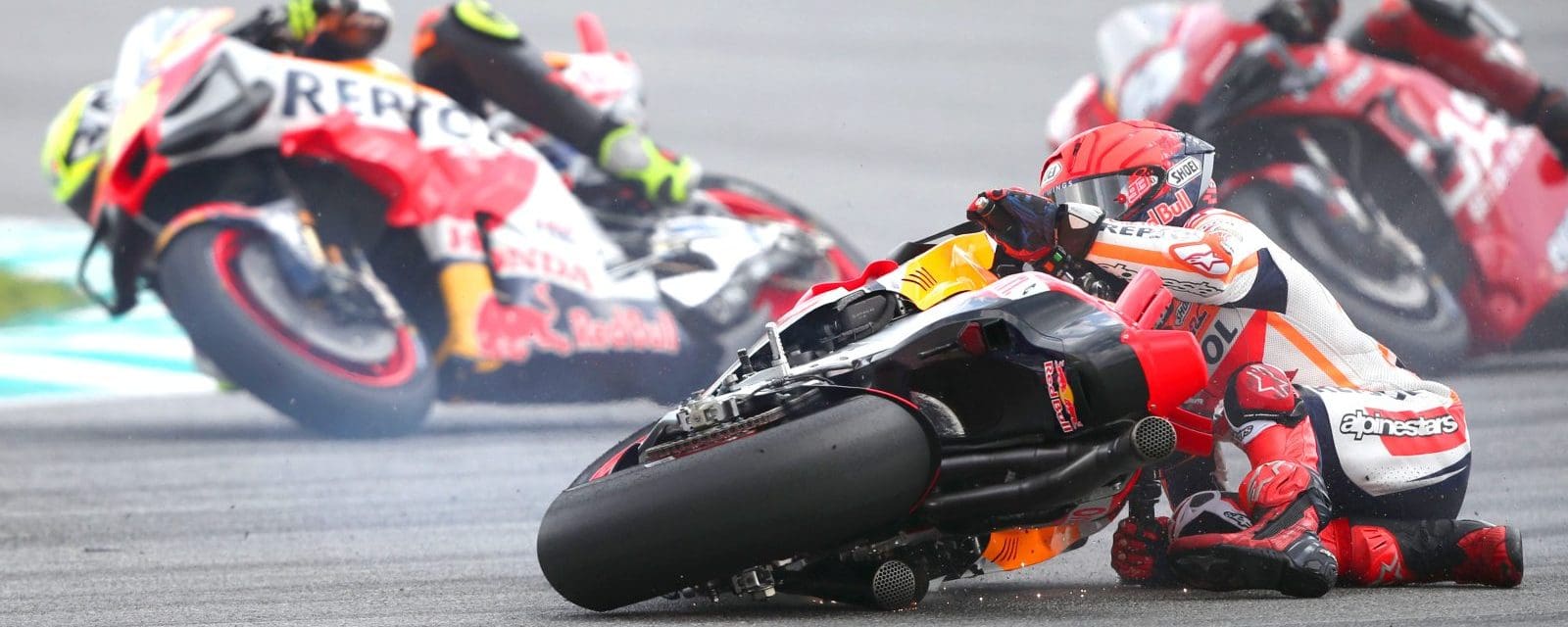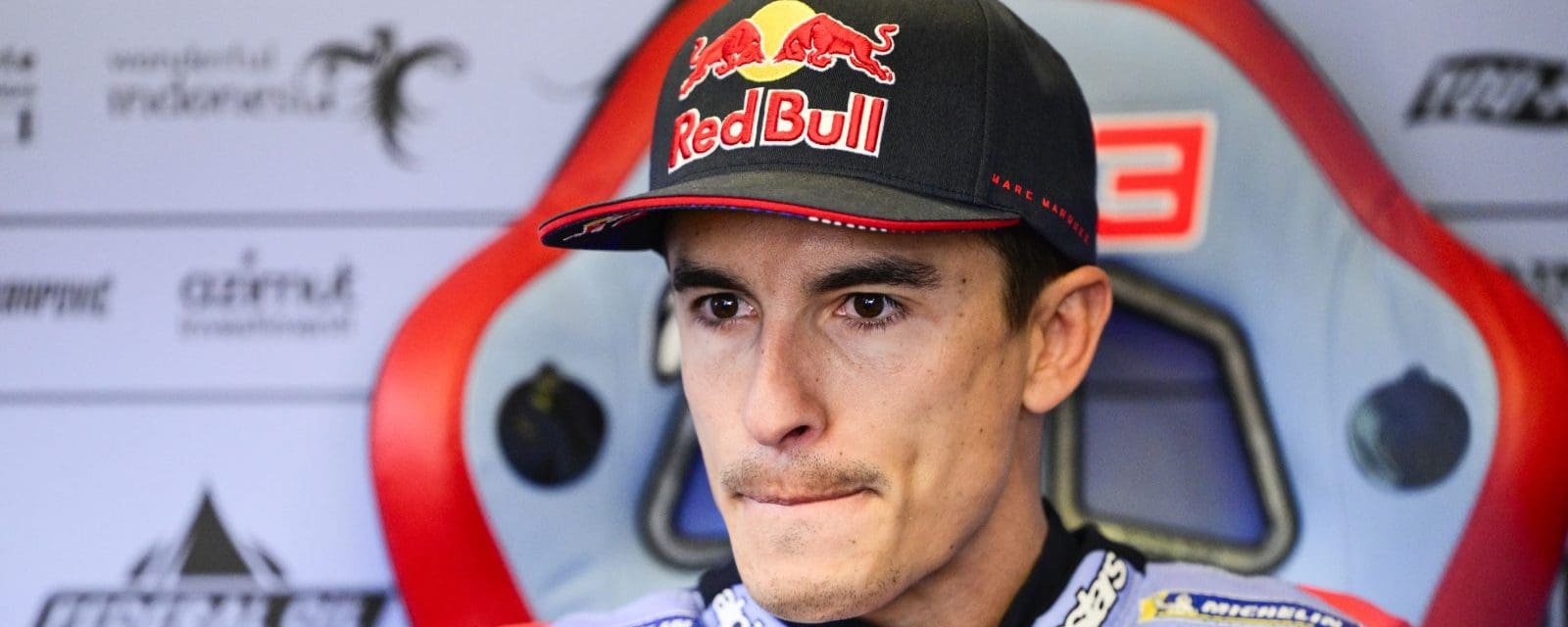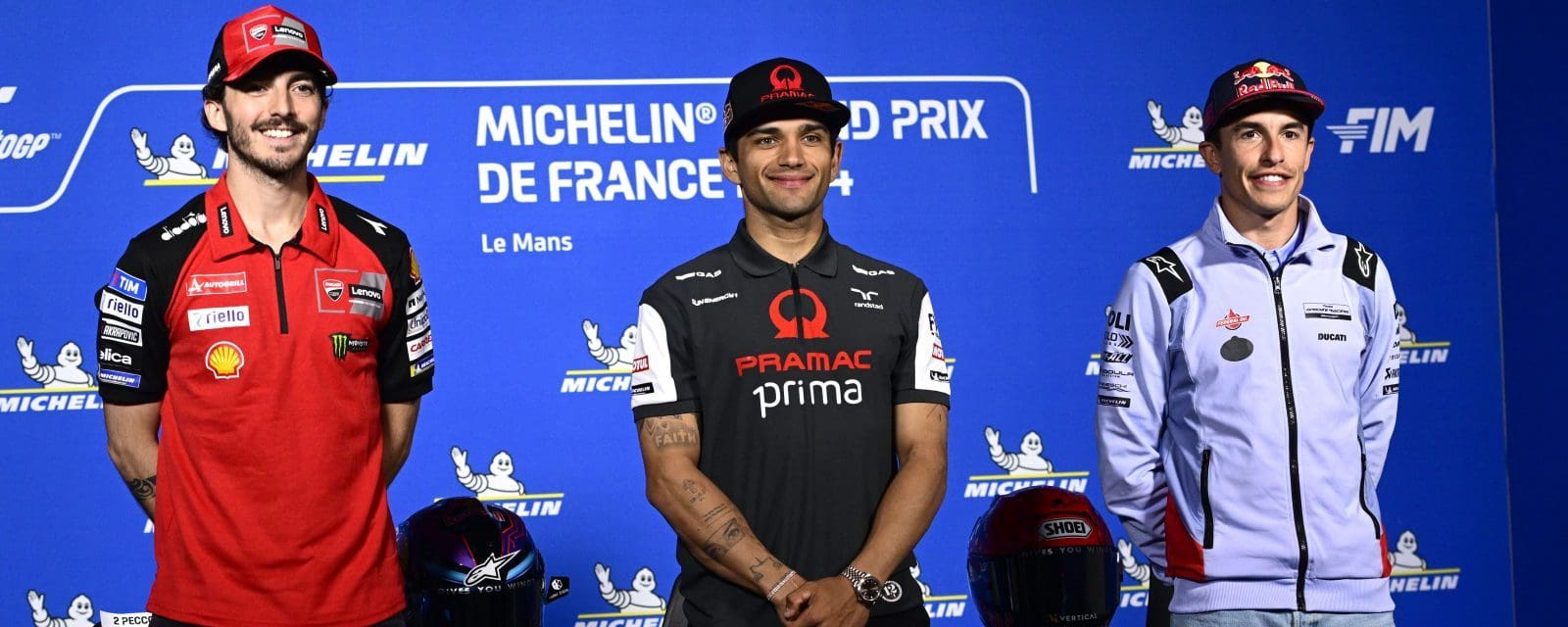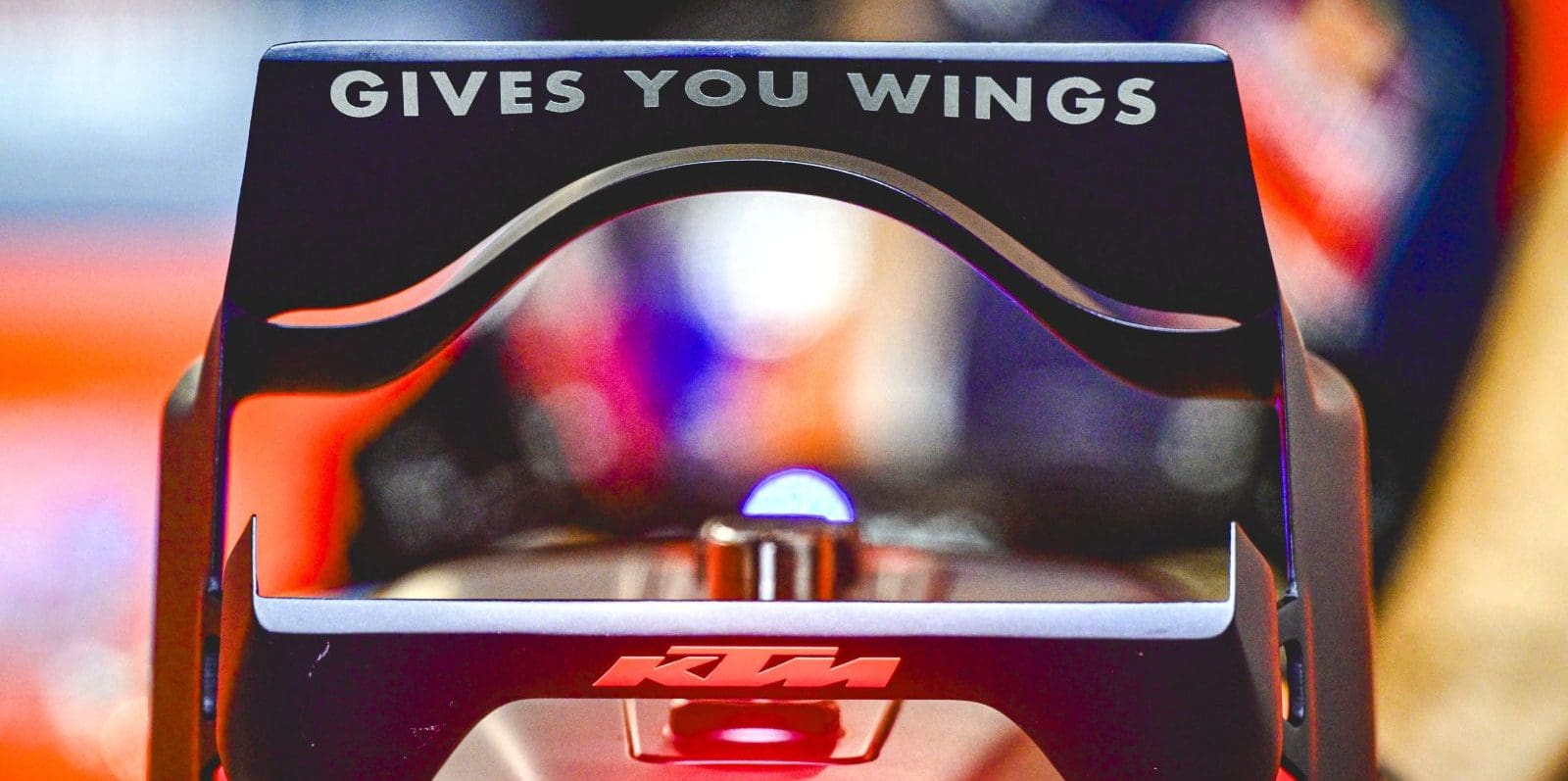Sometimes a duel becomes inevitable: two fighters arrive together at the top of a sport and one of them must lose and one of them must win. This is MotoGP now, with Honda’s reigning champion Marc Marquez and Yamaha’s new hope Maverick Viñales. There are others standing on the sidelines of this showdown – Valentino Rossi, Jorge Lorenzo and Andrea Iannone – hoping to turn this duel into an all-out brawl, but most likely the two strongest competitors on the two strongest bikes will be the main players in the 2017 title fight.
The Márquez versus Viñales struggle is interesting because it’s been a long time since two such outwardly similar riders have disputed the crown. Before we had Rossi and Lorenzo, Rossi and Stoner, Stoner and Lorenzo. All three of these contests were between riders of diametrically opposed mindsets: Rossi the lord of all he surveys against Stoner the country boy, Rossi the deluxe hippy against haughty Lorenzo, and Stoner the man with a chip on his shoulder against the imperious Lorenzo.
Márquez and Viñales, however, are similar in many ways. Márquez is the son of a construction worker, Viñales the son of a sea fishermen. “Fishing is a really tough job,” he says. “I went out with my dad twice and no more. The first time the sea was calm, it was beautiful. The second time there was a storm – horrible, like a nightmare. I was sick, boof!”

2. Mav winning the trophy (and the oil) against Miguel Oliveira (R) and an already tall Loris Baz (L)
3. Incredible to think that Mav (centre) and Marc (right) shared a podium way back when
4. Fighting it out last year at the Red Bull Ring in Austria
Both youngsters come from humble backgrounds and still carry their humility with them. They are both intelligent, happy to chat with journalists, and seem to get along with their teams of gofers who attend to their every need so they can maintain their unerring focus on winning the prize. Not all top racers are like this. Some wander around in a mood of smug arrogance and paranoid tension, making life a misery for everyone around them. Of course, this philosophy can also be a strategy to win the ultimate prize, but it’s a much less beautiful thing.
The big question is this: can Márquez and Viñales remain unchanged as the intense pressure of factories, sponsors and fans bears down upon them and turns them into something very different; like several millennia of heat and pressure transforming a beautiful green fern into a lump of coal?
Márquez already knows what it’s like and has adapted well. He is a raging lion on the racetrack and a purring pussycat when interviewed by the media, or trampled upon by crowds of fans chasing selfies and autographs.
Viñales, on the other hand, has already spent two years in MotoGP but only on the edge of the limelight. It remains to be seen how he will cope when caught in the headlights of corporate interest and fandom worship.
What is already certain is that Viñales knows exactly what is coming his way on the racetrack – even before the first tests of 2017 he had Márquez marked down as the man he must beat. And after Sepang, Phillip Island and Qatar, Márquez surely has Viñales down as the man most likely to steal
his crown.
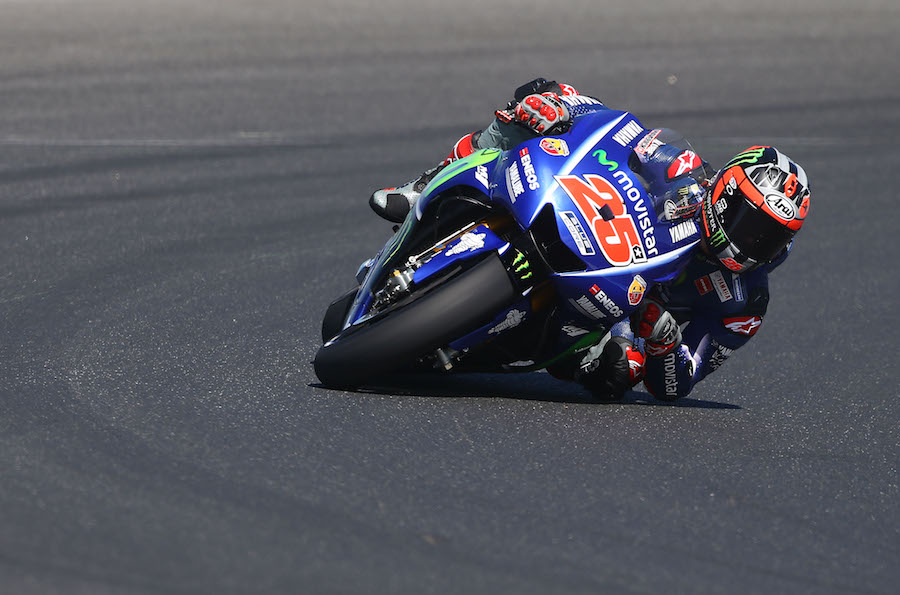
Viñales – a smoother rider than the all-action Márquez – expects their duel to be interesting. “I think it will be a really nice battle. We ride different: it looks like I have everything more under control on the bike, while Marc is a very aggressive rider, but when I have to be aggressive I am. If I need to put the bike there, I will put the bike there. I don’t have fear. Honestly, if I need to overtake and I touch the other rider a little bit … you know, this is racing.”
Márquez would agree. No one likes a fight more than the former 125cc and Moto2 world champ and he’s capable of giving back everything he receives.
“I overtake aggressively, so I expect the others to do the same to me!” he says.
It is significant that Viñales will be Márquez’s first title rival who also graduated to the premier class through Moto2, instead of the old 250cc championship. The 250 class was more like fencing; Moto2 is more like wrestling.
More than anything, what will push Márquez and Viñales ahead of the pack is their mastery of the Michelin front tyre. The big story of last season was Michelin’s front slick, which didn’t have the astonishing performance of the Bridgestone. This explains why most riders crashed more during the 2016 season than they had during the Bridgestone era. Outright grip wasn’t so much the Michelin’s problem as a lack of warning, so the cleverest riders rode to the limit of the tyre, rather than to the limit of the motorcycle.

Racers need two main features from a tyre, especially a front – they need grip and they need an early warning system. There is very little point in a tyre delivering astonishing grip if it only announces that you have exceeded its limit with 0.001 seconds to spare. Most riders can’t react that quickly, so they end up crashing. On the other hand, there’s no point in having a tyre that gives plentiful warning of impending disaster but has limited outright grip. Usually these two qualities are mutually exclusive, so the tyre engineer’s job is to find a way through that conundrum.
The two Spaniards have an almost supernatural sensitivity for the front tyre, so they can feel the traction better than anyone else and thus survive on that knife edge between glory and the gravel trap.
Márquez is astonishing with the Michelin front. His hard-charging corner technique, learned on Bridgestones, should spell disaster, but it doesn’t. And that is the beauty of motorcycle racing: one plus one rarely equals two. He speeds up to a corner, rear tyre swaying in the wind this way and that, the front tyre squished into the asphalt, then, just as it looks as though he must miss the apex, he flings the bike onto its side. For anyone else, this would end in tears. Like fellow Honda RC213V rider Cal Crutchlow, whose crew suggested he try braking 20 metres later in search of a better lap time. So he did … and crashed. Somehow Márquez can control the tyre as he leans onto its shoulder, then resist its tendency to skid away from the apex and lose grip. Crutchlow says his secret is “cat-like reflexes”.
Viñales is also dazzling with the Michelin front. Last season Lorenzo’s accident rate increased by almost 300 per cent. That statistic suggests he gains his feel from what the whole motorcycle is doing, rather than from that tiny interface of rubber/asphalt at the front of the bike. When that goes wrong, he can’t react quickly enough.
Many other riders suffered similarly last season: Pedrosa’s crash rate increased by 250 per cent, Iannone’s by 150 per cent and Rossi’s by 100 per cent. Meanwhile, Viñales crashed almost 50 per cent less than the year before. Indeed, he was the only rider who crashed less in 2016 than in 2015.
That shows a real mastery over that nanosecond of warning, which in turn suggests Viñales’ synapses are turbocharged, just like Márquez’s.
But Viñales’ brilliance with a sketchy front tyre isn’t purely riding talent. A rider doesn’t succeed at the highest level just by what he does on the racetrack. He also does his research while he’s sitting in the pits.
“I always try to get really good information from Michelin,” he says. “If I hear that one or two riders have crashed with a compound I haven’t tried yet, then I won’t use that compound. We always try to understand which tyre is best. But this year’s front tyre is much better – you get a good warning.”
The fact that both men have the full measure of the Michelin front will play a major part in their battle this year, because in MotoGP’s modern era, riders and engineers work extra hard at increasing corner-entry performance.

There’s a simple reason for this: traction control. Even Dorna’s lower-spec unified software allows most riders to exit corners at the same speed, so it’s very difficult for the more talented riders to find more traction and therefore more acceleration to take them past their rivals on the next straight. The battle therefore takes place at the end of the straight, which is why we see so many entertaining (and sometimes ugly) confrontations as riders fight for that same square inch of asphalt.
Márquez has spent much of the past four seasons battling with Lorenzo, a rider who was rarely keen to fight shoulder to shoulder. But both Márquez and Viñales are happy to swap paint. There’s little doubt that they will clash at some point this year and hopefully without any of the acrimony that has tainted so many parc ferme celebrations during the past few years.
And the omens are promising. They both enjoy a good dust-up, possibly because that was how they learned to race in Moto2.
“I remember battling with Aleix [Espargaró] several times,” says Viñales, talking about his former Suzuki Ecstar teammate. “In one race we touched maybe six or seven times, then at the end of the race we got off our bikes and we smiled at each other. That’s racing.”
Márquez also enjoys gladiatorial combat. During the first preseason tests at Sepang – and also at Phillip Island – he played cat and mouse with his new rival. “We were just joking,” explains
Viñales, with a hint of understatement. “We were riding together, trying to see where each of us are. We are hoping to understand each other very well!”
Márquez is ready for the challenge, even though the first time he raced his young opponent – a decade and a half ago on 70cc Metrakit bikes at a karting track – he got beaten.
“For sure Maverick will be my biggest rival this year, one of my toughest opponents; him and his teammate Rossi,” he says. “I am two years older than Maverick, so when we raced I was like a wildcard rider in his Metrakit series. We had a battle and more or less we were at the same level. I think he won. But they were very different times – after the races all the kids played together: football, bicycle, skateboards.
“Maverick has a good mentality because he is quiet, but on the racetrack he’s very aggressive and always pushing. On the Suzuki he was already very fast and now he’s with Yamaha he’s even faster!”
Viñales’ move from Suzuki to Yamaha is almost the perfect team transfer. The GSX-RR and YZR-M1 are similar bikes, not because they are transverse fours but because the engineering concept of both design groups is to create a neutral machine. Any everyday motorcyclist could hop on the Suzuki or Yamaha and recognise them as motorcycles.
The Desmosedici and RC213V, however, aren’t conventional bikes – an everyday motorcyclist wouldn’t understand them. The design concept of the Ducati Corse and HRC engineering groups is to obtain lap times with a radical design that requires the bike to be ridden with animal aggression to unleash its full potential. Even riders as talented as Valentino Rossi and Nicky Hayden have been undone by Ducati and Honda V4s.
Márquez will most likely use Honda’s friendlier big-bang engine configuration this year, instead of the screamer he has used throughout his MotoGP career. But at the time of writing he still wasn’t sure.
“The new engine gives better traction at some points, but it changes everything with the electronics, so we have much work to do,” adds Márquez, who will continue with the same modified 2014 frame he used last year.
Viñales climbs onto a motorcycle that has undergone nothing more than gentle evolution for more than a decade.
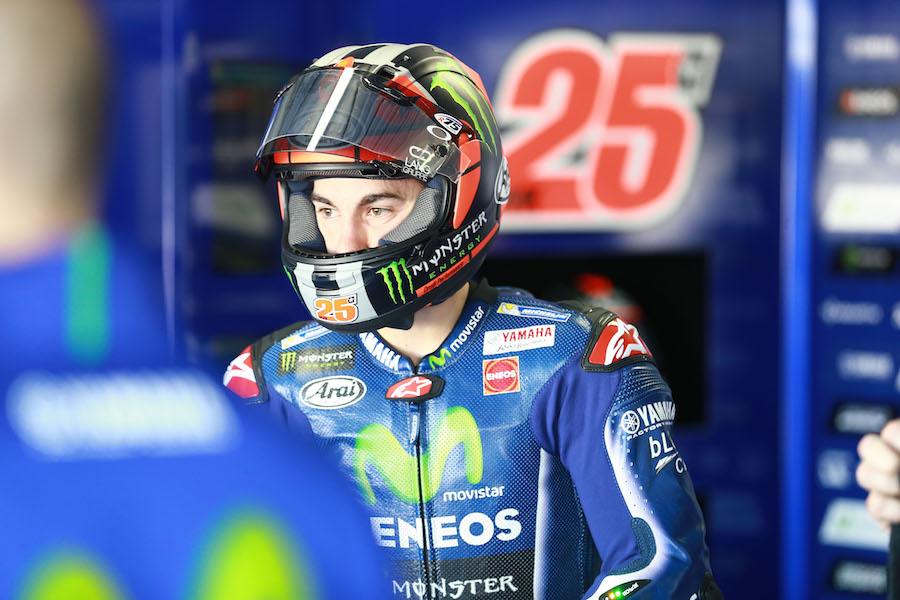
“The way I ride looks similar to the way Rossi rides, so I will have to use his data to improve my way,” he says. “The Suzuki and Yamaha are a bit similar, they are friendly bikes, but I do need to change my riding style a bit. Sometimes I am too aggressive so I make the bike slide, which doesn’t work with the Yamaha. Also I sometimes brake too aggressively, so I am trying to work out where to brake so I can still turn the bike well and use corner speed. The traction of the Yamaha is really constant through the corners, so you can work a lot on entry speed and corner speed.”
Márquez’s biggest concern – apart from choosing the right engine – is dealing with the pressure that almost brought him undone him last season.
“Last year the pressure was very high, almost too high, and it was difficult to manage because in 2015 I lost the championship because of my own mistakes. So during 2016 the pressure was there – I could not lose the title again, for me, for the sponsors and for Honda. This year I feel less pressure but my motivation and target are the same.”
Let the battle commence…
